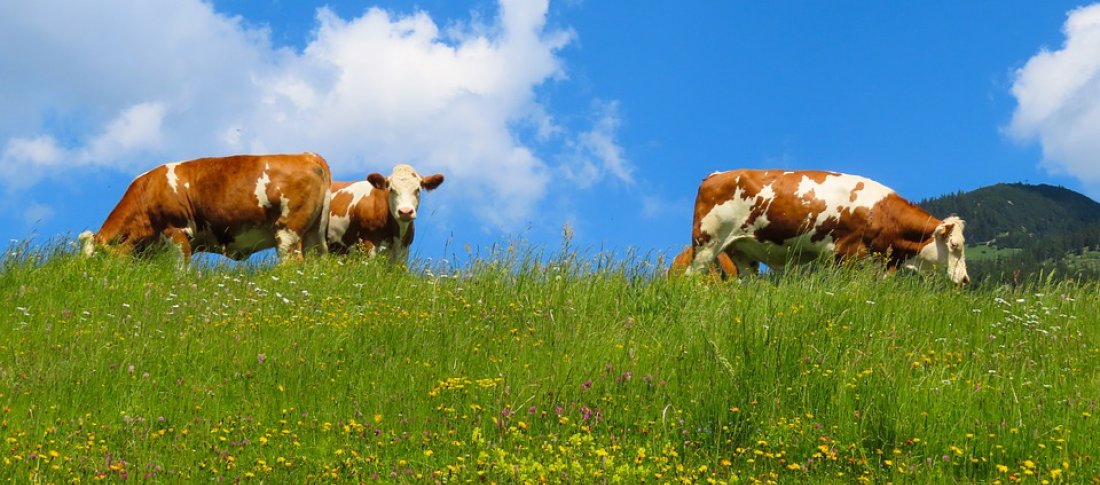Are you worried that one of your herd may be showing signs of grass staggers? Urgent action is required. Here’s what you need to know.
What is grass staggers?
Grass staggers (also known as tetany or hypomagnesaemia) occurs in cows that are deficient in magnesium. The disease can occur at any time but is common in lactating cows at grass due to the double-whammy of grass being very low in magnesium and cows losing magnesium in their milk.
What are the first signs of grass staggers?
Because cows do not store magnesium and rely on daily dietary intake, grass staggers can take hold rapidly. Sadly grass staggers can strike so rapidly that cows may die without any discernible signs of disease. However, if a cow in your herd does display initial symptoms, be alert to signs of:
- Restlessness
- High head carriage
- Teeth grinding
- Muscle twitching
- A staggering, lumbering gait
- Separation from the herd
- Over-alert appearance
- Excitable and/or aggressive behaviour
Grass staggers progress rapidly and animals may fall down and experience convulsions, with frenzied paddling of the limbs and frothing at the mouth.
What are the consequences of grass staggers?
Without intervention grass staggers is deadly. Death may follow at any stage of the above progression of symptoms.
How to treat grass staggers
Treatment must be prompt to save your cow. Contact your veterinary surgeon as a matter of urgency. And take care: cows with grass staggers can be boisterous, aggressive and unpredictable.
A typical treatment is an injection with magnesium. This may take the form of a subcutaneous injection of a calcium and magnesium solution or a combination of slow intravenous injection followed by subcutaneous injection. The course of action depends on how urgently the animal requires magnesium. (Though note that too much magnesium, too quickly is also fatal.) Animals should not be moved during the treatment. Once they have responded they can go to pasture. Note that it is relatively common for cows with grass staggers to relapse. The initial injections will only raise magnesium levels for around 6 - 12 hours. It’s vital that the affected animal receives dietary magnesium. Even then repeat treatment may be necessary - especially if magnesium levels were critically low in the first instance.
How to prevent grass staggers
Of course, prevention is always better than cure. Thankfully there are a number of measures you can take to reduce the risk of grass staggers in your herd. And it really is best to take a herd-wide approach. As with most nutritional diseases, the animals displaying outward symptoms are likely to be the tip of the iceberg. Many cows in your herd will be at risk and some will typically have already developed subclinical symptoms.
Fertilisers and fields
Avoid using potash fertiliser, which interferes with magnesium uptake and can increase the risk of grass staggers. High levels of ammonia (from nitrogenous fertilisers) also inhibit magnesium absorption. Slow growing forages (such as clovers and other broad-leaved plants) contain far higher levels of magnesium than typical grasses. Though take note that lush pastures are often lower in fibre, increasing the speed at which food passes through the rumen and reducing absorption times. It’s a delicate balancing act.
Feed and forage
As noted above, it’s vital that your cows receive adequate magnesium in their diet. NADIS advise that 2.5g/kg DM of magnesium per cow as a guideline to meet the requirements of the majority of lactating cows at pasture. AHDB Dairy suggests the best method is to include 60g magnesium oxide (calcined magnesite) per cow per day in the ration.
Supplementation
Daily supplementation should be given to at-risk animals. There are a variety of options available depending on your feeding system including magnesium licks, mineral supplements high in magnesium, magnesium chloride which can be added to the water and calcined magnesite previously mentioned. Please do remember to consult with your nutritionist and or feed advisor to decide which options would best suit your herd’s requirements.
Remember cows can not store magnesium, therefore, they are reliant on the magnesium they receive daily in their rations.
The cost of supplementing the diets of 100 cows for two months is likely to be significantly less than the loss of one animal due to grass staggers.
Conclusion - top tips
- Look out for early symptoms of grass staggers - such as restlessness, high head carriage and muscle twitching.
- Grass staggers progresses rapidly and is fatal if left untreated - call a vet immediately if you are in any doubt.
- Treatment is administered via injections of magnesium solutions. Animals should respond in 30-60 minutes.
- Initial treatment will only raise blood-magnesium levels for 6-12 hours. It’s vital to provide dietary magnesium. Even then repeat treatment may be necessary.
- Take a herd-wide approach to the prevention of grass staggers.
- 2.5g/kg DM magnesium will meet the magnesium demands of most lactating cows at pasture, which can be obtained through supplements.
- Test grass and soils to optimise dietary supplementation.
- Avoid the use of potash fertiliser, which inhibits magnesium absorption.
